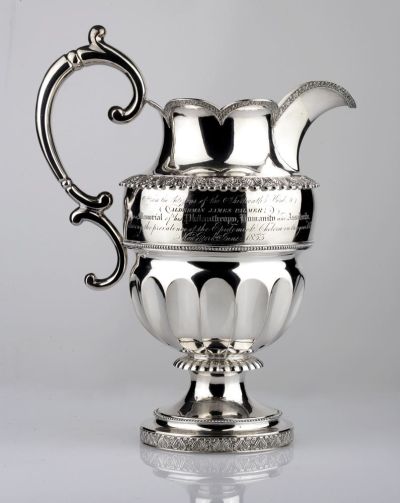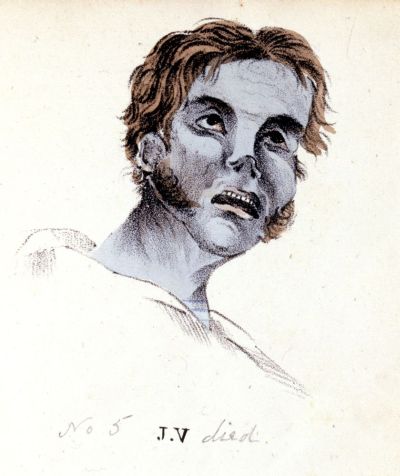
Jared L. Moore (American, active 1825-1852), Presentation Pitcher, 1833, Silver, New-York Historical Society, Gift of Reverend Lanford Baldwin, 1977.11
This pitcher is inscribed:
“From the Citizens of the Thirteenth Ward, to ALDERMAN JAMES PALMER; as a Memorial of his Philanthropy, Humanity and Assiduity, during the prevalence of the Epidemick Cholera in the year 1832 New York, June 1833.”
Rivington Street, site of one of the temporary Cholera hospitals set up by the Board of Health in 1832, runs through the Thirteenth Ward. Whether Alderman Palmer broke the mold of his largely ineffective colleagues on the Board is unclear, but this pitcher is probably similar to the “suitably inscribed” silver presented by the Board to each of the ten physicians who voluntarily ministered to the cholera victims of the Second Ward. The irony of using a vessel to hold liquids for such a commemoration would not become apparent for another two decades.
In 1854, when London was hit by a severe outbreak of cholera, theories of its cause abounded as they had during prior outbreaks. Prominent physician Dr. John Snow (1813-1858) argued that the disease was not spread by airborne miasmas, but rather was caused by poisons from the excretions of victims contaminating the water supply. Snow tested his idea by plotting reported cases of cholera on a map of London’s Soho district. He discovered that most victims drew their water at the same source – a public pump on Broad (now Broadwick) Street. His study convinced the local parish council to disable the pump by removing its handle. It was later shown that the outbreak began when water used to wash an infected baby’s diapers was thrown into an old, leaking cesspit adjacent to the well. Snow’s study, a seminal event in the history of public health, led to the general acceptance of germ theory and the foundation of scientific epidemiology.

